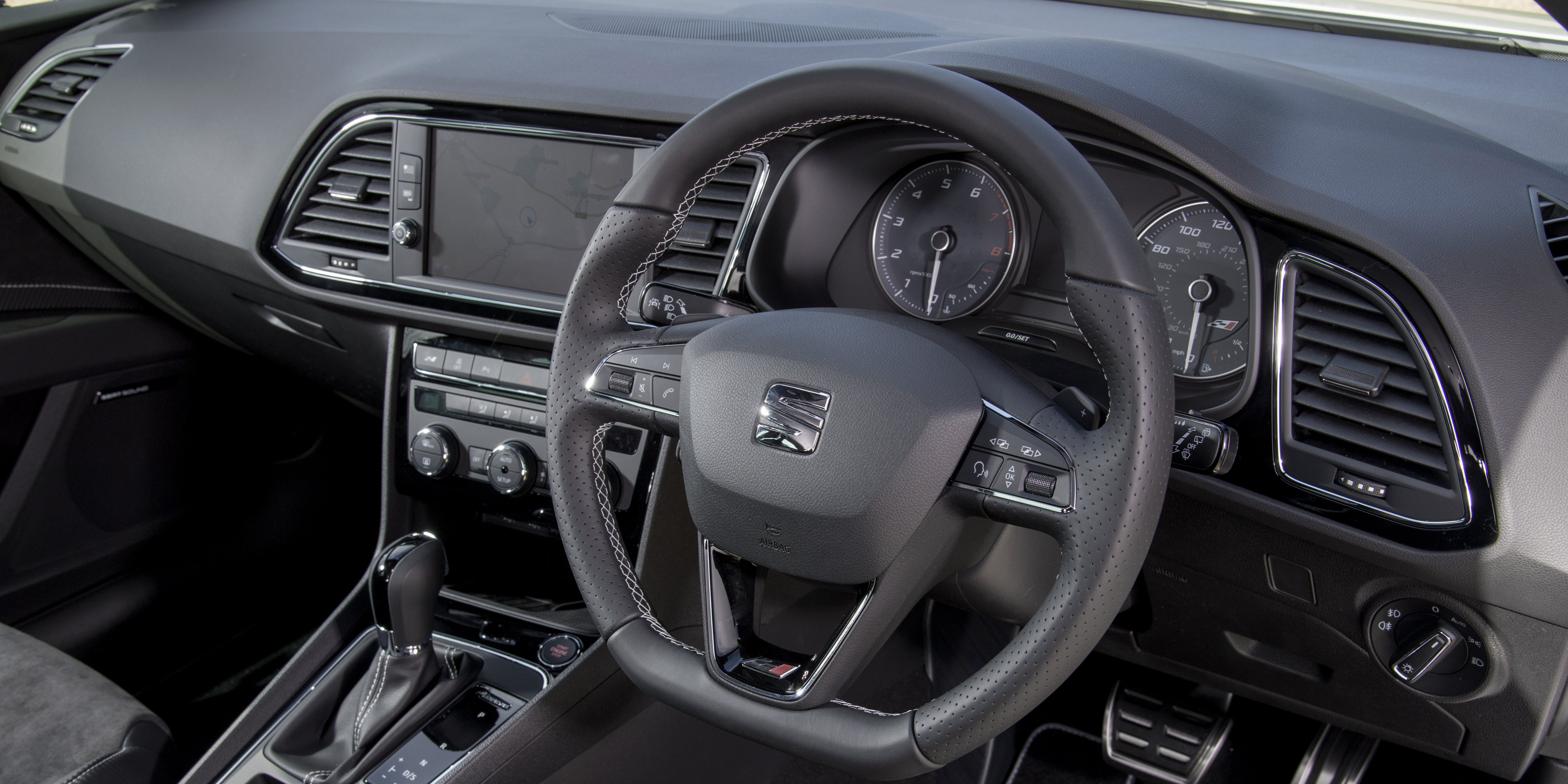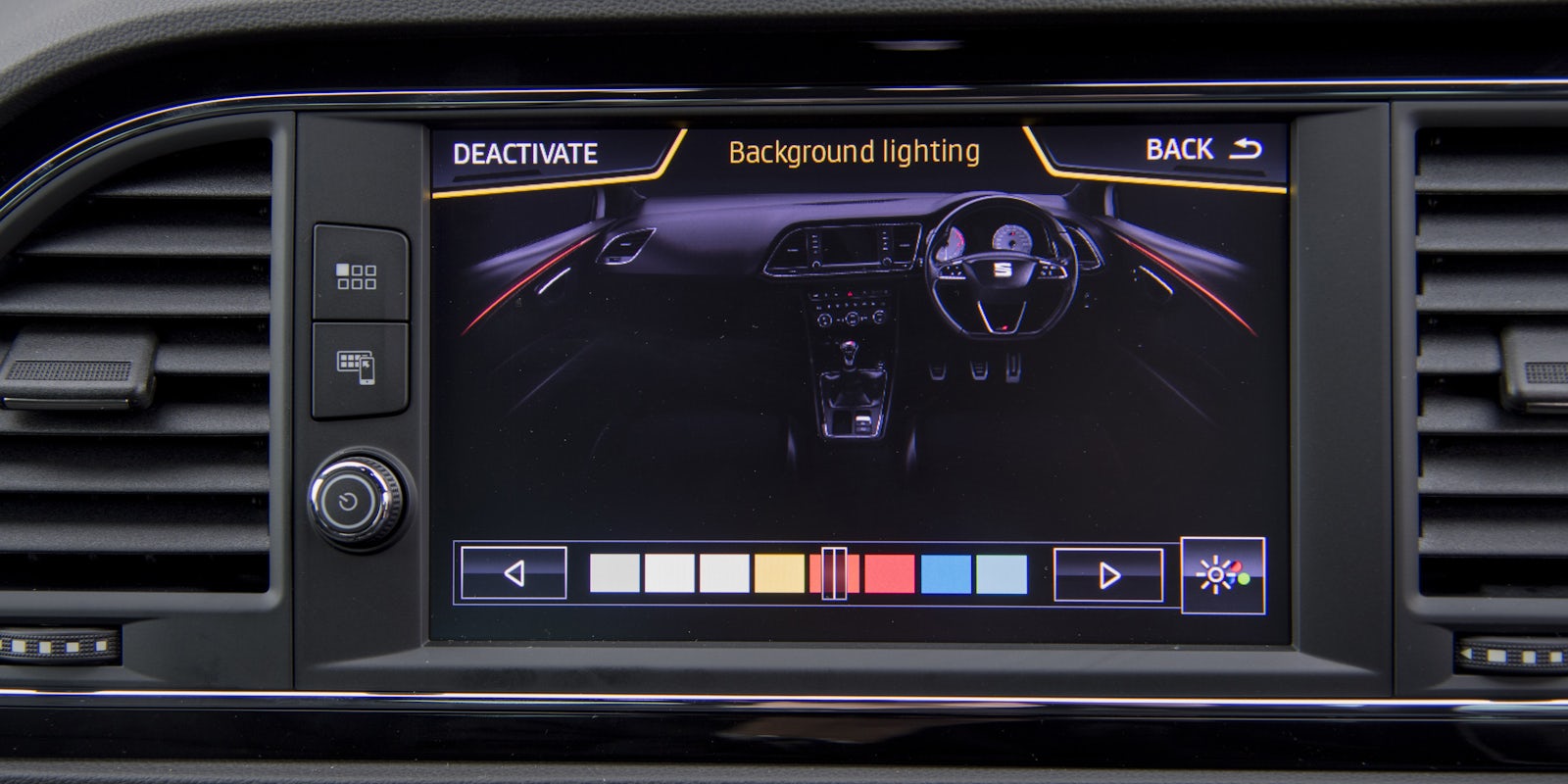SEAT Leon Cupra ST interior
The Leon Cupra ST’s interior isn’t exciting to look at, but it’s well made and has all the tech you need.
Style

Sit in the Leon Cupra ST and you wouldn’t necessarily think you’re in a fast car – the dashboard is a stretch of chiselled grey and black soft-touch plastics which feel fantastic but won’t set any designers’ hearts fluttering. There’s a flat-bottomed leather steering wheel which feels fantastic, and sporty race-style seats grip you reasonably tightly but are cushioned enough to keep bums happy on long journeys.
The 2017 update added multi-coloured ambient lighting which glams the cabin up a bit at night, and the eight-inch touchscreen is surrounded by less grey plastic than on the older version of the car. You won’t feel short-changed, but come on SEAT, would it break the bank to jazz things up with some more colour?
It doesn’t look very special inside – come on SEAT, we thought you were meant to be Spanish and sexy!
- Used
- £17,350
Infotainment

All SEAT Leon Cupra ST models come with an eight-inch touchscreen sat-nav system as standard. It’s done away with many of the physical shortcut buttons of the old system, so now you have to jab one physical button then another virtual one to flick between sat-nav and radio settings. It’s a bit of a faff on the move and takes your eyes off the road more than a BMW system. In use the screen is responsive and the graphics look great, but there are niggles. Zooming in and out on the sat-nav screen to spot your junction involves doing a smartphone-style ‘expand’ gesture on the screen with two fingers. Get this slightly wrong and you’ll move the map somewhere you’re not, and you’ll have to prod another button to find your position again. The old system let you turn a physical dial to zoom in and out, but this extra physical control has been consigned to a Spanish dustbin.
Zooming in and out on the sat-nav screen to spot your junction involves doing a smartphone-style ‘expand’ gesture on the screen with two fingers. Get this slightly wrong and you’ll move the map somewhere you’re not, and you’ll have to prod another button to find your position again. The old system let you turn a physical dial to zoom in and out, but this extra physical control has been consigned to a Spanish dustbin.
Smartphone users (that’s almost everyone, then) are well catered for – all cars come with Apple CarPlay, Android Auto and MirrorLink as standard, so you can use your phone’s built-in sat-nav software and stream your Spotify tunes seamlessly to the car’s standard and punchy 10-speaker audio system. Bluetooth is also standard, as is voice recognition.
Pay an extra £165 and SEAT will build your car with a wireless charging pad for compatible smartphones, and this also adds a signal booster.
- Used
- £17,350